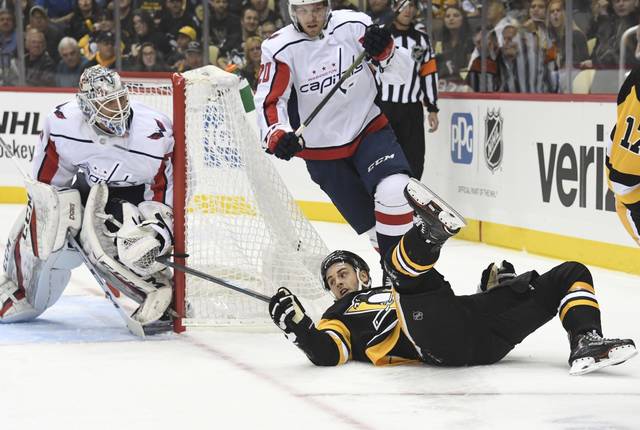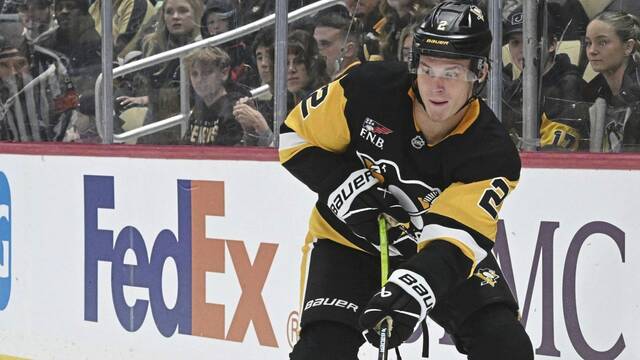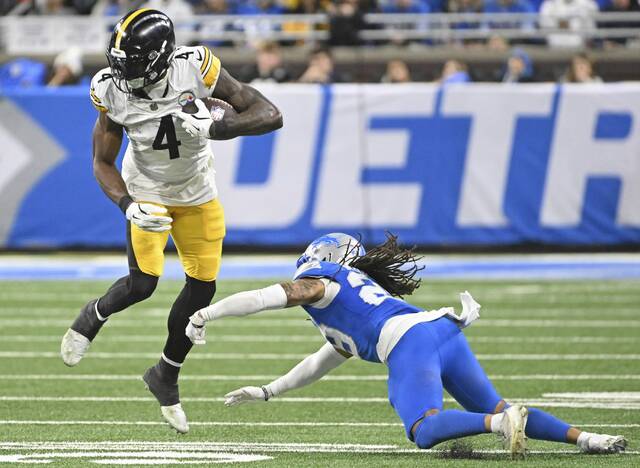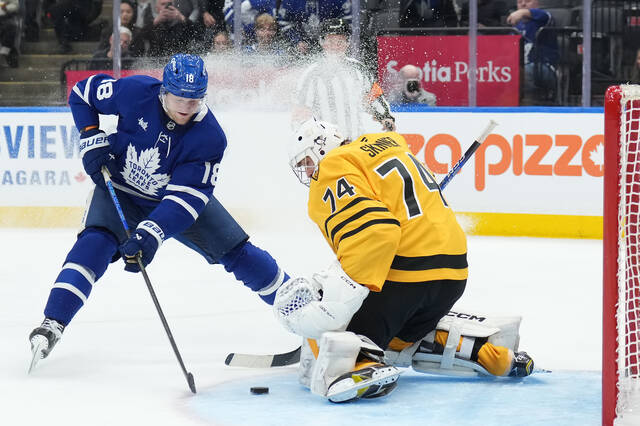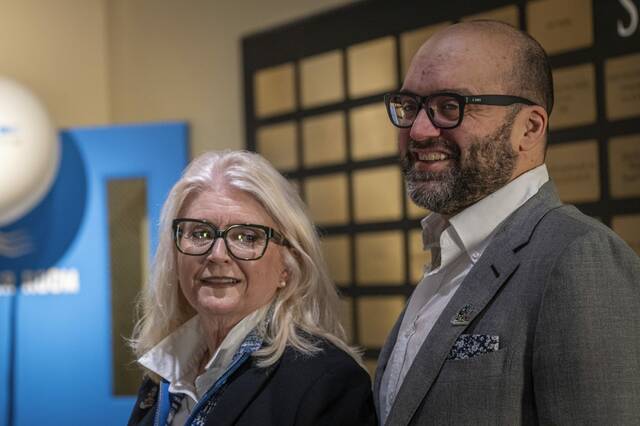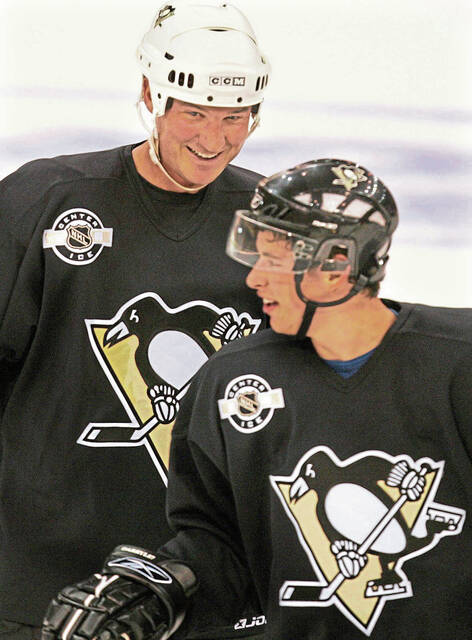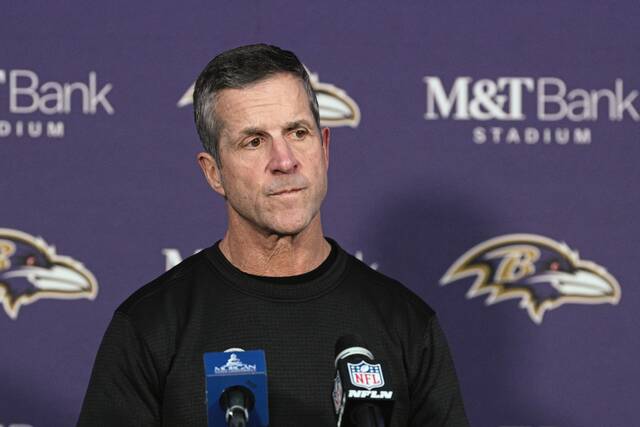There are lots of ways to evaluate the trade the Pittsburgh Penguins made with the Florida Panthers on Friday.
Framed in one particular fashion, it appears as though general manager Jim Rutherford pulled off another impressive piece of sleight of hand.
That framing is this: The Penguins traded away two players having disappointing seasons who will be unrestricted free agents in July and in return received two young forwards with upside who are under contract beyond this season.
“We ended up getting younger guys that are in our control for some time now,” Rutherford said after sending Derick Brassard, Riley Sheahan a second-round draft pick and two fourth-rounders to the Florida Panthers for Nick Bjugstad and Jared McCann.
Brassard was undoubtedly a disappointment in his time with the Penguins, never taking to a third-line role. Sheahan made more of a positive impact, especially on the penalty kill, but it’s hard to say a forward with nine points in 49 games with a $2.1 million price tag is having a great year.
Bjugstad and McCann, meanwhile, are former first-round picks with all kinds of potential.
Bjugstad, 26, has outstanding mobility for a 6-foot-6 forward and has a 24-goal season in the NHL to his credit. McCann, 22, has a high hockey IQ, good speed and strong defensive awareness. His game profiles a little like Nick Bonino’s at the same age.
And to be frank, Bjugstad and McCann won’t have to hit 100 percent of their potential to make the Penguins forget about the Brassard era entirely and call the trade a win.
There is one way to frame the trade that raises a few more doubts for the Penguins, however.
That framing is this: The Penguins traded two guys who have scored 16 goals this season for two guys who have scored 13 and had to include three draft picks on top of that just to get the deal done.
For all of Bjugstad and McCann’s impressive attributes, their production hasn’t always matched their talent. It’s reasonable to expect their numbers will improve when they join a high-octane team like the Penguins, but what if it doesn’t?
What if they end up being ill-fitting pieces and the fact that they’re under contract beyond this season becomes a minus rather than a plus?
On balance, there’s more evidence to support the positive framing than the negative one. This trade looks like a win for the Penguins on paper.
But as Brassard knows better than anyone, a good trade on paper doesn’t always translate onto the ice.
Here are three other takeaways from Friday’s trade:
1. Columbus Day
If this trade ends up being a successful one for the Penguins, they ought to thank two players from their hated rivals in Columbus.
Blue Jackets stars Sergei Bobrovsky and Artemi Panarin have indicated that they intend to test free agency in July. The Panthers have been linked to both players.
From the Panthers’ perspective, the trade opened up $5.35 million in cap space that Bjugstad and McCann would have eaten up next season to use in pursuit of Bobrovsky and Panarin. If the pair had re-signed with Columbus, the deal probably never happens.
2. Doing math
For this season, Friday’s trade was almost a wash financially. Brassard and Sheahan have a cap hit of $5.1 million. Bjugstad and McCann have a combined hit of $5.35 million.
For next season, it pushes the Penguins right up to the cap again.
If the cap grows to $83 million, as expected, the Penguins will have a little more than $4 million left to re-sign restricted free agents Marcus Pettersson, Juuso Riikola, Zach Aston-Reese and Teddy Blueger and add a minimum-wage 13th forward.
It’s not impossible, but it’s pretty unlikely. Rutherford will probably have to move a player out as a cap casualty.
3. Good timing
Rutherford is known for not waiting until the trade deadline to make his big, in-season moves. In this case, that’s a particularly prudent strategy.
Rutherford now has more than three weeks to assess his team and decide whether further moves are necessary.
If Bjugstad and McCann fit and Justin Schultz’s return from injury gives a boost to the defense corps, Rutherford can sit back and sip a lemonade on deadline day. If the Penguins continue to struggle with inconsistency, he has a first-round draft pick and a little bit of cap space with which to make further repairs.
Follow the Pittsburgh Penguins all season long.
Jonathan Bombulie is a Tribune-Review staff writer. You can contact Jonathan at jbombulie@tribweb.com or via Twitter @BombulieTrib.


